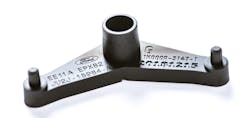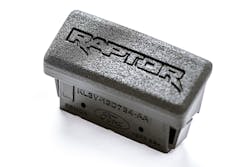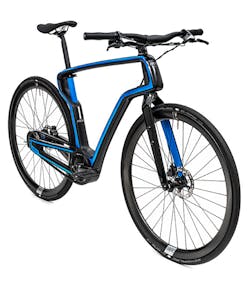I talked a lot about 3D printing in 2018, and this year the process will continue to grow. Some companies say the technology is at a tipping point of mass adoption, while other continue to take incremental steps towards disruption. This article will look at some of what we can expect moving forward.
The 3D Printing Market
It’s hard to compare predictions. Many predictions have different timeframes, focus on a specific part of 3D printing, or break up the technology into industries. These differences can make it hard to compare trends. Below are only a few comments on the 3D printing market that are available.
- According to SmarTech Publishing’s 3D printing market outlook and summary report, the 3D printing industry grew 24% in 2018 for a total market of $9.3 billion. In addition, in 2018 the polymer 3D printing segment was growing to an estimated $5.5 billion.
- As reported by Forbes, “The eponymous “Wohlers Report 2018”…reveals significant increases in metal additive manufacturing (AM) this year. Investors will appreciate the solid 21% growth as the AM industry exceeds $7.3 billion.”
- MarketsandMarkets.com says the overall 3D printing market is expected to reach $34.8 billion by 2024, from $9.9 billion in 2018, and will grow at a CAGR of 23.25% from 2018 to 2024.
- The market for 3D printing technology and materials in aerospace is expected to increase to $531.1 million by 2024, according to Frost & Sullivan.
These statements do not cover everything. There are still many opportunities companies are not taking advantage, or full advantage of in 3D printing. For example, “The opportunity for additive manufacturing in repair applications is often overlooked, but when you consider that corrosion and wear cost the US economy $300 billion per year, and that the global commercial aviation industry spends almost $100 billion annually on repair, you can get a better sense of the magnitude of these markets,” said David Ramahi, president and CEO of Optomec.
These are obviously a lot of numbers, and the potential to disrupt traditional processes is large with 3D printing. Currently, aerospace and the automotive industries are helping to drive these numbers, but medical is also finding new ways to use 3D printing. Moving forward it will be not only new technology and materials that drive the 3D printing market, but also standardization and the digital thread.
Standards and Inspection
Aerospace, automotive, and medical are highly regulated industries. For 3D printing to really take off in these areas, in addition to others, engineers need a way to verify quality. A complete digital thread of everything from feedstock materials, equipment and process parameters per parts, to delivery might be necessary to ensure parts meet standards and regulations.
Ford and Carbon have teamed up to use 3D printing to produce finished parts. This is an exciting step forward and will help to digitize Ford’s production line.
Obtaining repeatable results can be difficult. An entire industry will have various powder providers and building parts with different machines, all which can yield different results. In fact, even if you have the same powder and machine you could still see different results. For example, selective laser sintering (SLM) has shown even with the same batch of powder and the same machine, it is possible to tune Al-12Si yield strength between 235 and 290 MPa, ultimate strength between 220 and 460 MPa, and ductility between 2.8% and 9.5% in tension.
To advance 3D printing it would be difficult to inspect and verify everything. For scalability in-line or automated processes will have to be used. This will lead to more inspection equipment in the 3D printing industry. 3D scanners, reverse-engineering software, CT scans, and a full digital thread will carry a lot of value to standardize the process while not slowing it down.
CT scans are proving to be a good way to inspect plastic parts, and it could potentially be worked into the production line. Partner CT technology with vision inspection software, and it could be automated. Unfortunately, metals can present difficulty.
Using 3D printing allows companies to customize production and increase flexibility.
Sigma Labs is working on this and now offers a vision process that works to do more than just complete a digital thread for part certification. PrintRite3D INSPECT in-line process quality monitoring and control is able to determine if any parameters have skewed too far from the standard and stop production.
Stopping the process when errors have been detected is important. Speed is one of 3D printing’s limitations, and metal powder isn’t cheap. If a part fails early into the print, you might not know until much later in production. Image if a part has a failure on the second layer but is hundreds or thousands of layers until completion. Monitoring the process and stopping it could save days of wasted machine time in addition to material.
Materials
Speeding up the process while reducing cost is grabbing headlines and will continue to do so as we move further into 2019. While plastic printing can offer multiple cost-effective options, Metal 3D printing has taken more time to find a way to reduce the barrier to entry. Printers like HP Metal Jet and Desktop Metal look like they might change the way we think about metal printing, but there are limitations. Binder jet-made parts are not be as strong as parts made in other processes. But there are many low and non-load-bearing parts to be optimized, and so the binder jet process has gotten attention in the industry. As engineers become more comfortable with 3D printing, we might continue to find more solutions with this process.
Longer fibers means stronger material. The fibers help spread a load over an area. A continuous fiber orientated in the direction a load is expected can help increase the final part’s strength.
Not all disruption is in metal. I’m excited to see what happens with 3D printing and carbon fiber this year. Markforged claim to be the first and only carbon fiber process in town, but last year Stratasys released a carbon fiber focused printer. As complex, lightweight, strong parts are able to be printed faster and stronger, the intensive manual labor process might be finding a way to automate.
Stratasys launched the Fortus 380, carbon fiber edition. With aerospace and automation leading much of the 3D printing market expansion, weight and strength are important, and being able to reduce the cost of carbon fiber parts would be a great step toward disrupting traditional carbon fiber industry.
Arevo, a carbon fiber 3D printer, is focusing on software to optimize the carbon fiber printing process. By looking at the process from the software point of view, the fiber is laid in the best direction to increase a parts strength based on how the part is used. This new printer has a continuous carbon fiber wetted into the filament, which needs to be cut between layers, but the software also reduces the cutting of the fiber to only when it is necessary. According to Avero, random fiber can improve strength, but controlling fiber orientation could make a part five times the strength of titanium at one third the weight.
New materials are providing OEMs with stronger or more flexible polymers, and companies are experimenting. As I toured and talked with many companies in 2018, I noticed many of them have purchased some type of plastic printer. While this can provide value, some large companies have invested heavily into 3D printing processes.
Technologies
Materials are helping to progress 3D printing, but there are some new technologies that I think will provide more than just an incremental jump forward for the process. While the continuous liquid interface production (CLIP) was developed years ago, it is seeing success in the automotive industry. I will cover this more in part 2, but this type of technology is going to move 3D printing forward, and it looks like the liquid polymer vat curing processes might be adding more innovation to its arsenal.
Many years ago, I saw my first 3D picture made in a clear polymer that looked like crystal. This novelty was made in minutes on location—which was a small kiosk that couldn’t have had many resources other than maybe a 110 V outlet. A single laser would pass through the polymer, but when intersected with a second layer the energy at the intersection would create a small bubble. After the process repeated many times, a 3D image would emerge in the polymer.
When I first heard of 3D printing, specifically stereolithography (SLA), I wondered if it would be possible to use the same technology in 3D pictures to speed up the 3D printing process and eliminate post-processing. 3D printing is a three-dimensional process, yet we are still building stacks of two-dimension layers. Two technologies might change how we view this in 2019.
The multi laser volume stereolithography (MLVS) and computed axial lithography (CAL) methods represent a true 3D building process. MLVS could be simply described the same way the 3D picture is, but instead of a hard polymer forming a bubble, it is a liquid polymer being solidified. CAL is also a liquid vat polymer process, but might be considered more of an evolution of digital light projection (DLP).
DLP project the entire cross-section into the polymer at once. Often the light source isn’t strong enough to use higher strength polymers, but by projecting the entire cross-section at once rather than tracking it with a laser, it can operate faster. The CAL process uses two-dimensional images like DLP but from different angles. This means it is possible to solidify large sections, or the entire part at once in a few seconds where the light/energy sources overlap. Using superposition exposures from multiple angles the material is exposed to enough energy to solidify into the desired geometry. The CAL technique also lets parts be overmolded. Faster production with the ability to overmold inserts, threads, etc. into parts are why I think this process will receive more attention in 2019. The core concept was inspired by Computed Tomography.
Both MLVS and CAL are said to increase speeds and eliminate problems with stepping and support structures that increase post-processing times and waste material. These processes might not be adopted in 2019, but at the speed technology moves today, it might not be long until they are causing more disruption.
In our next installment, I’ll cover how Stratasys is pushing for carbon fiber tooling, Ford and Carbon’s work on the F-150 Raptor Auxiliary Plugs, how Ultimaker’s is moving farther into industrial printing, and how Optomec acquiring Huffman will accel the company into the repair and aftermarket markets.




